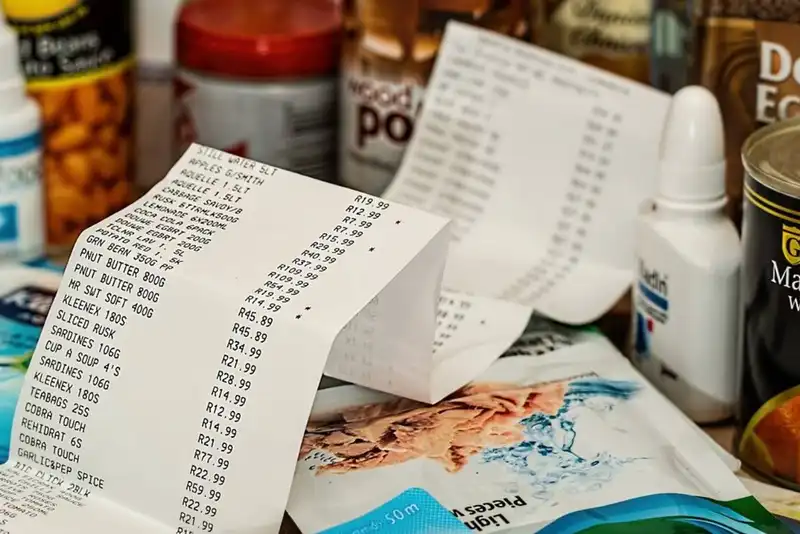How to Calculate Food Costs
What is Food Cost?
Food cost is a calculation of the food inventory in the restaurant and the revenue earned on those same ingredients during food sales. Most of the time, food cost will be referenced as a food cost percentage. Determining food cost will provide a clearer picture of how much money is made or lost on the product.
Calculating food cost should be precise starting with the beginning inventory purchases. Then the ending inventory is subtracted to get the actual food cost break down. Once this food cost usage number is acquired, it is then divided from total food sales. This will equal the food cost percentage. Food cost makes a substantial impact on restaurant financials, which is why a clear idea of the numbers is important to have.
Why is Calculating Food Cost Important?
There are many benefits to calculating food costs. For instance, menu items can't be priced correctly without having food cost totals be accurate. The more specific the total food cost, the easier it is to price per dish. Calculating food cost allows restaurant owners to have more control over the performance of the business.
Three important aspects of calculating food costs-
1. Menu Pricing
Menu prices are a determining factor to staying competitive in the marketplace. Knowing what the price of the competitor's menu items provides a reference point for creating an ideal food cost. Having this data at hand will make menu engineering easier.
2. Ingredients
The ingredients involved in the signature menu dish will factor into the plate cost. Considering the cost of ingredients and portion sizes used will mark up the cost of the recipe mix for menu item.
3. Tracking
Successful restaurants track the menu prices effect on sales. Meticulous inventory management can keep food costs under control. A POS System with management software will make it easier to track and adjust any fluctuations in the total cost.
Track Inventory Needs Daily
Having too much inventory on hand is just as bad as not having enough to meet daily needs. Running out of ingredients for the special of the day will cost sales of that menu item. Just as, over ordering can cause food items to spoil sooner than they should have. Regular inventory checks help keep levels on par and reduce over-ordering mistakes.
Choosing how often to run inventory checks will come down to the size of the operation. A weekly inventory of supplies might work better for small operations that have tighter margins. Weekly inventories help to pinpoint any spikes in food cost. Once the problem has been narrowed down, it can be handled and reduce costs from rising.
Another method to use is doing an inventory count of only the top-selling items rather than a full count every week. For example, top-shelf spirits or high-end cuts of meat should be physically counted weekly to ensure the amount matches the expected run from the food sales.
How to Calculate Food Cost
If a business is losing money it can usually be tied back to high of food costs. Figuring out the restaurant food cost will give a more accurate idea of profit margins. Using a food cost calculator can make this process run much smoother.
Determine per-plate food cost
An easy way to determine food cost is by calculating the cost per plate. It takes these simple steps to figure the food cost per plate-
- Make a list of ingredients
- Determine the cost of each ingredient
- Combine overall ingredient costs
Determine Overall Food Cost
Determining overall food cost is similar to figuring the food cost per plate, each begins with the costs of goods sold (COGS) and goes from there. To get the most accurate number, any comps or food spillage should be subtracted from the food sales total before calculating the overall food cost percentage.
Include Beverage Costs
When determining food cost percentage, beverage costs should also be included. To project a detailed report of beverage costs, sales should be separated out by spirits, beer, wine and soft drinks. Running totals in this manner will detail the areas that need improvement the most. Organizing products as they are stocked will save time when calculating food and beverage costs.
Avoid Food Waste
Keeping food costs under control requires a team effort from the entire staff. Everyone from the prep cook to the wait staff have an impact on food cost. It's important to try and minimize any spillage, over pours, or inaccurate measurements that can affect a restaurant's supplies.
Spoiled food can also impact food cost. Any perishable items should be stored properly to avoid turning sooner than anticipated. Make sure all the ingredients stored and properly labeled according to the FDA food storage guidelines. This will drastically reduce spoilage issues.
How to calculate food cost percentage
Most restaurants and bars focus on getting a food cost percentage to maintain accurate sales figures. A food cost percentage is calculated by dividing the cost of goods sold by the revenue earned. This food cost formula is standard in the restaurant business.
What is a good food cost percentage?
Many restaurants report 28-32% average on the food cost percentage. The right amount will vary depending on the food selection and other restaurant operation costs.
Understanding How to Calculate Food Costs

Food costs are on the rise making food cost calculations even more important when it comes to restaurant management. Many restaurants fail each year due to poorly managed food costs. Food cost control is meticulous but a major factor in restaurant success.
- Understanding and implementing food cost measures provides a direct impact on future revenue.
- Most successful restaurants report and average food cost percentage of 28-32%
- Three important areas of food costing are recipes, pricing, and tracking.
- To get the food cost percentage, most restaurant owners divide their food cost by total sales. Using a food cost calculator can simplify the process.





